Large Volumes Still Being Collected Despite Some Beaches Enjoying Lesser Weeks
As much as eight hundred tonnes of sargassum seaweed was collected from Cancun’s beaches in June, and over four thousand tonnes in 2022 so far. The staggering figures highlight the monumental task faced by the popular tourist town.
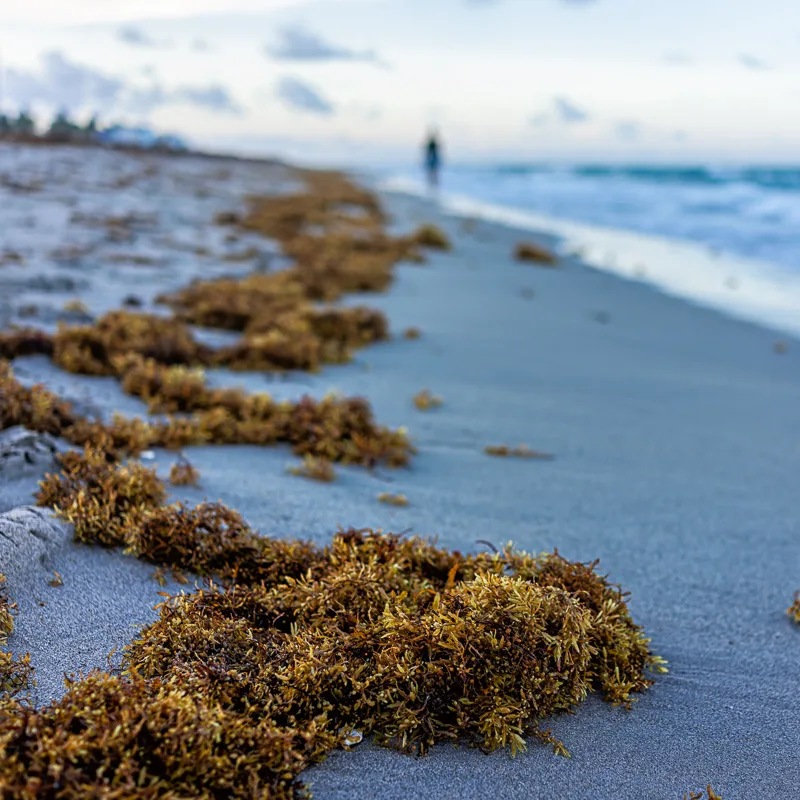
According to the government of Benito Juarez, the municipality where Cancun is located, the four hundred tonnes were collected in a manner of different ways. However, the bulk of the collection was done by hand or tractor on the shores themselves. Few beaches in the area have been spared from the incessant seaweed problem, with popular spots like Chac Mool, Playa Delfines, Del Nino, and Marlin beaches all being affected.
A problem now being tied to the collection is the damage being done to the beaches of Cancun. As a beach town, the sands of Cancun are one of its most important draws, and the constant dredging of the area leaves many parts of the beach unusable or with significant sand loss threatening the beach itself and any natural wildlife that inhabits it.
Some beaches have run successful reclamation projects in an attempt to nullify the damage being done, but these initiatives are limited in scope and not being applied to all of the beaches in the area.
Despite the high figures, there is hope on the horizon as the general trend is now going down, According to the figures, Cancun beaches saw fifty tonnes collected in January; one hundred and twenty-five in February; a huge one thousand two hundred in March; one hundred and seventeen in April; one thousand one hundred in May; and finally the eight hundred tonnes in June. The trend does appear to be decreasing in size, despite it now being the hottest time of the year, but July figures will allow further insight.
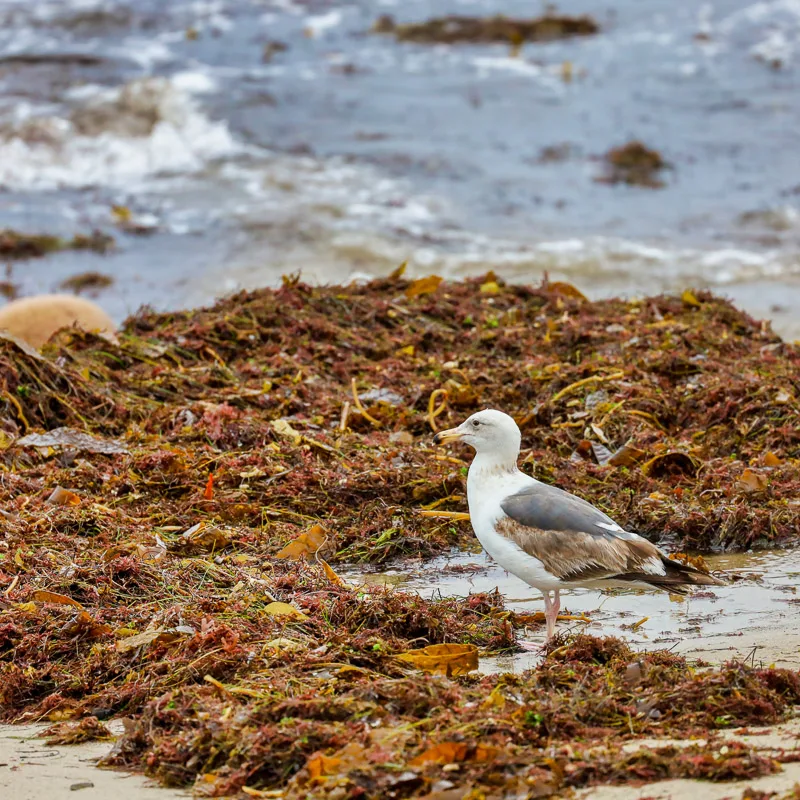
The sargassum battle has been going on for years in Quintana Roo and is unlikely to dissipate anytime soon. Its prevalence has been linked to global warming as the unpleasant macroalgae thrive in warmer waters. With global temperatures expected to continue increasing, there is every chance the seaweed will do the same.
Sargassum is unlike traditional seaweed. It grows in the middle of the Atlantic Ocean, where sea currents drag it across and up past the norther tip of Brazil. Several theories suggest that toxic dumping from Brazil exacerbates the sargassum growth, although the country denies it partakes in any illegal pollution activities.
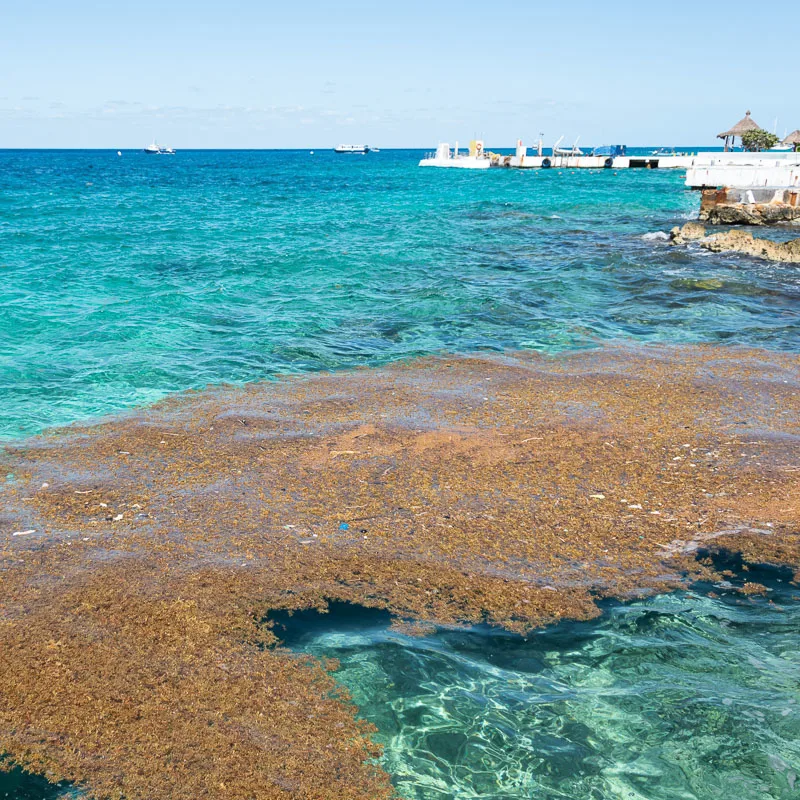
Once formed, it grows into massive tangles of seaweed as long as five kilometers, resembling a moving island. At sea, it poses no threat or inconvenience to humans. In fact, it’s a massive beneficial ecosystem that provides, food, shelter, and protection for small sea creatures, as well as depositing vital minerals in the ocean.
Unfortunately, the masses of sargassum are then pulled up through the Caribbean, where it is funneled between Cozumel and the Quintana Roo mainland. Forced through these narrow straits, the seaweed finds itself being washed up on shore.
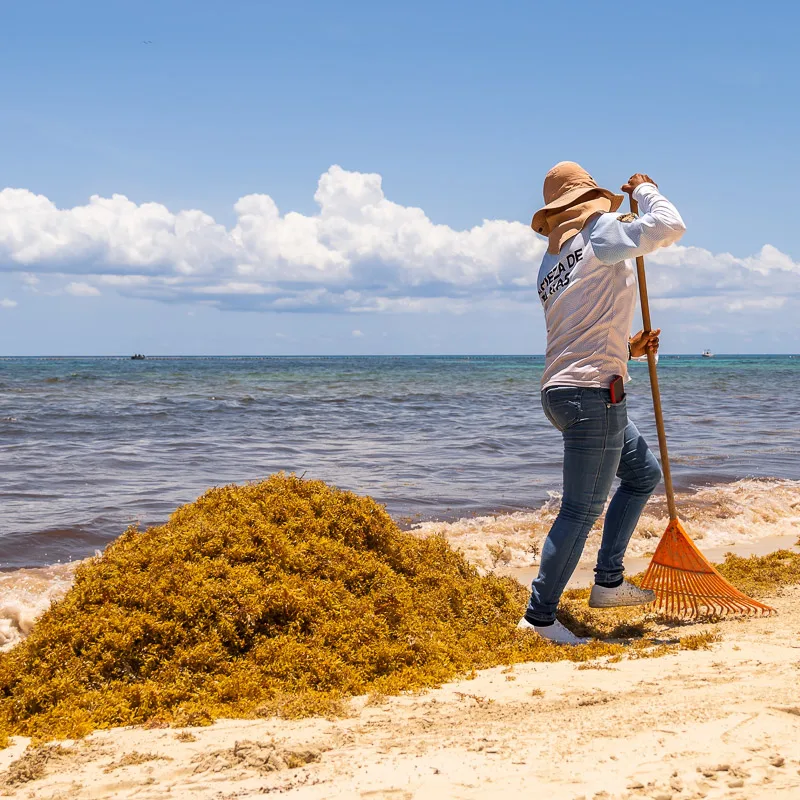
In the shallows, it turns the typically clear blue waters of the Mexican Caribbean a murky brown and even proves a potential threat for unconfident swimmers or children who sometimes find their feet tangled in its masses. Eventually, it makes it to the shoreline, covering the pristine sands of Mexico in piles of sargassum as much as one meter high.
As soon as it leaves the water, the seaweed begins to rot, producing an unpleasant sulfur-like smell that drives tourists away from the beach. Those who have experienced it before often avoid traveling to the Mexican Caribbean again during sargassum season while those new to it might find their holiday ruined.
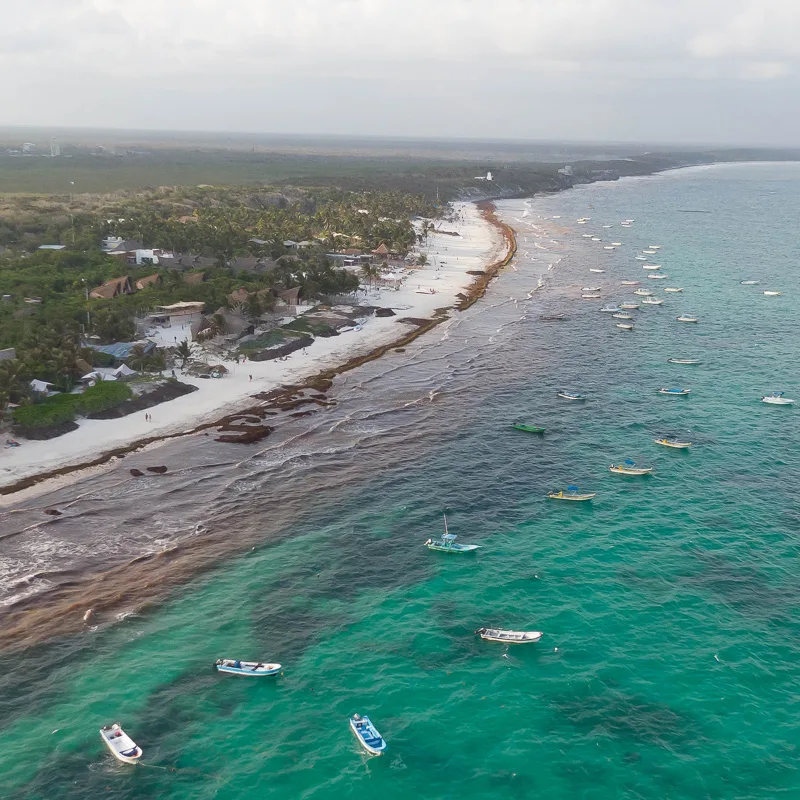
Local businesses and the government scramble every year to get rid of the unpleasant seaweed, even enlisting the navy to try and remove it from the ocean long before it reaches the shore. The NAvy’s venture has been an overwhelming failure this sargassum season. The cost of cleaning the beaches every day eats into the profits of restaurants and hotels, driving prices up for customers in the long run.
The problem is multifaceted and goes well beyond a simple seaweed. Many more drastic measures have been suggested, including a sixty-kilometer sea barrier placed between Cozumel and the mainland. The idea is gaining traction and many believe the ninety million dollar cost is worth it in the long run.
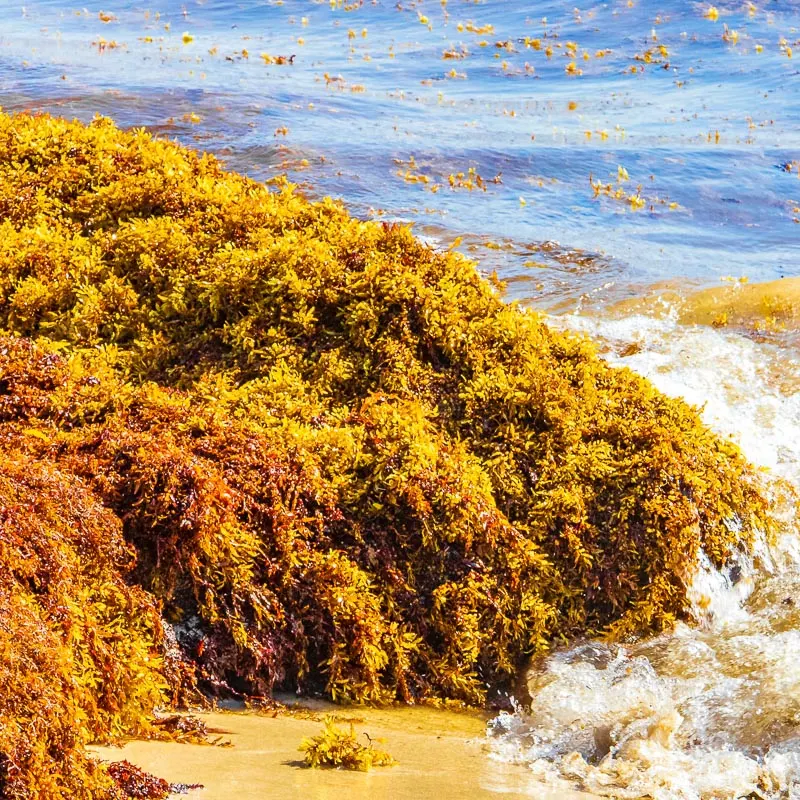
Those hoping to travel to Cancun should check in with their hotel before departing. Most beachside hotels now offer daily sargassum updates.
Plan Your Next Cancun Vacation:
Traveler Alert: Don’t Forget Travel Insurance For Your Next Trip!
Choose From Thousands of Cancun and Riviera Maya Hotels, Resorts and Hostels with Free Cancellation On Most Properties
↓ Join the community ↓
The Cancun Sun Community FB group has all the latest travel news, conversations and tourism Q&A’s for the Mexican Caribbean

Subscribe to our Latest Posts
Enter your email address to subscribe to The Cancun Sun’s latest breaking news affecting travelers, straight to your inbox.

Record Amounts Of Seaweed Invading Top Destinations Including Cancun And Puerto Rico – Travel70
Friday 5th of August 2022
[…] 800 tons of sargassum were collected in June solely from Cancun seashores. The completely different authorities within the Caribbean have been […]